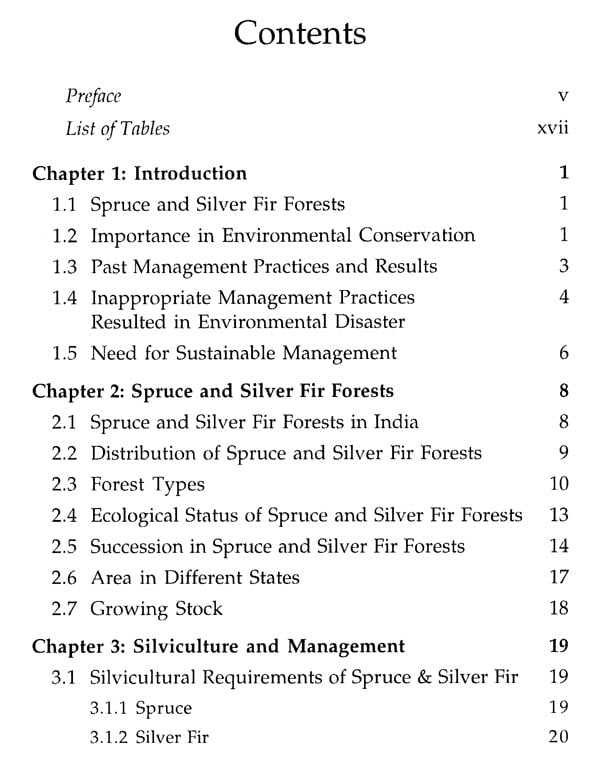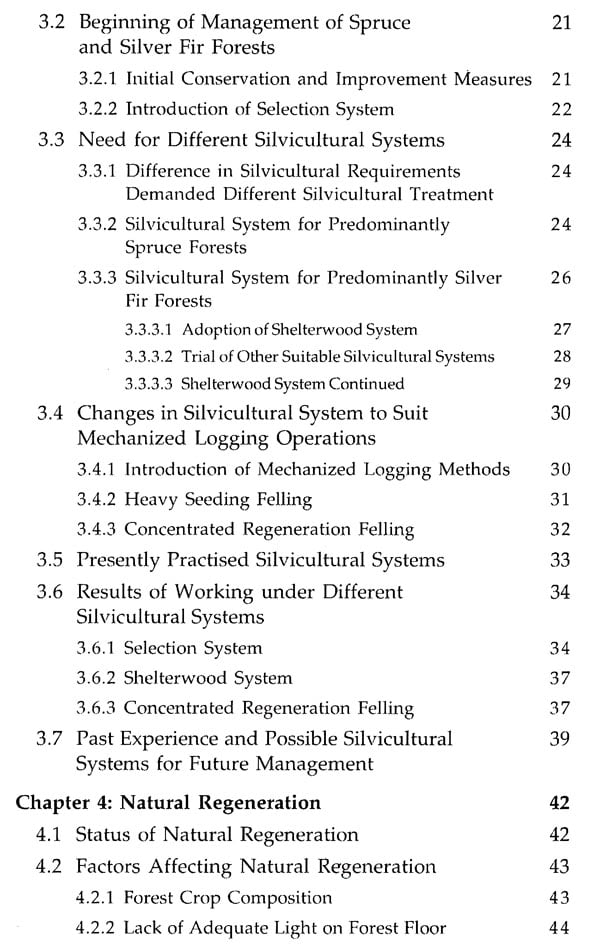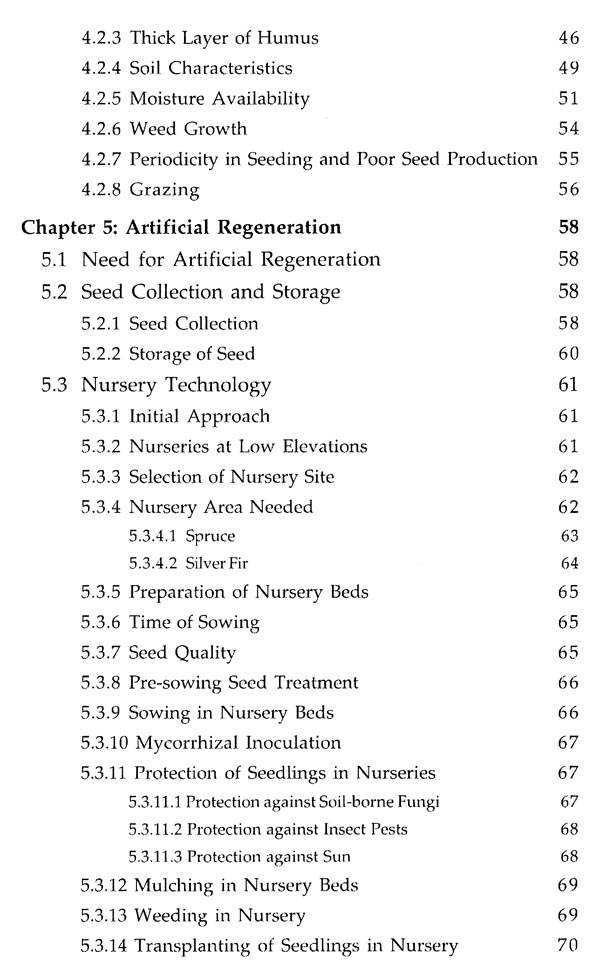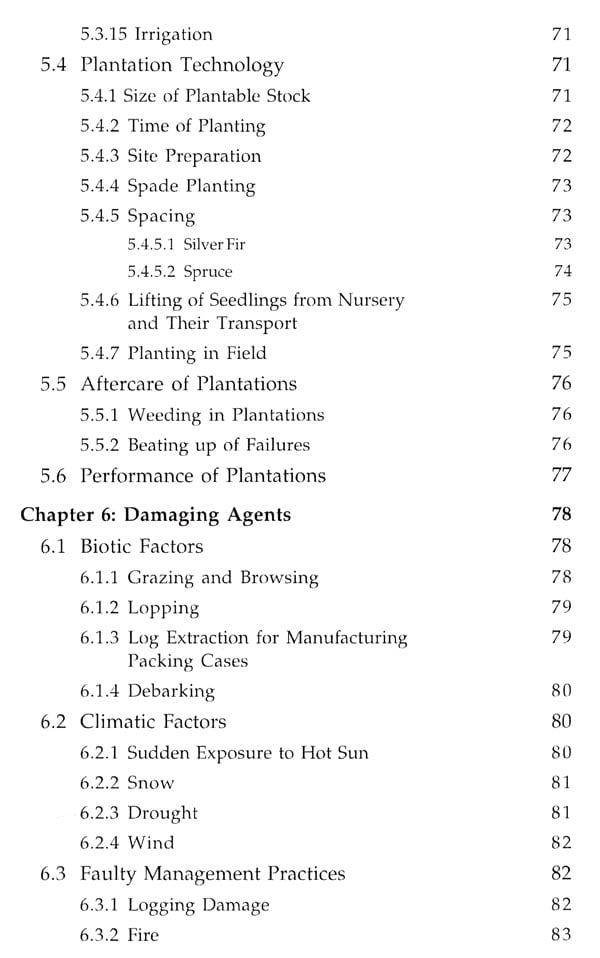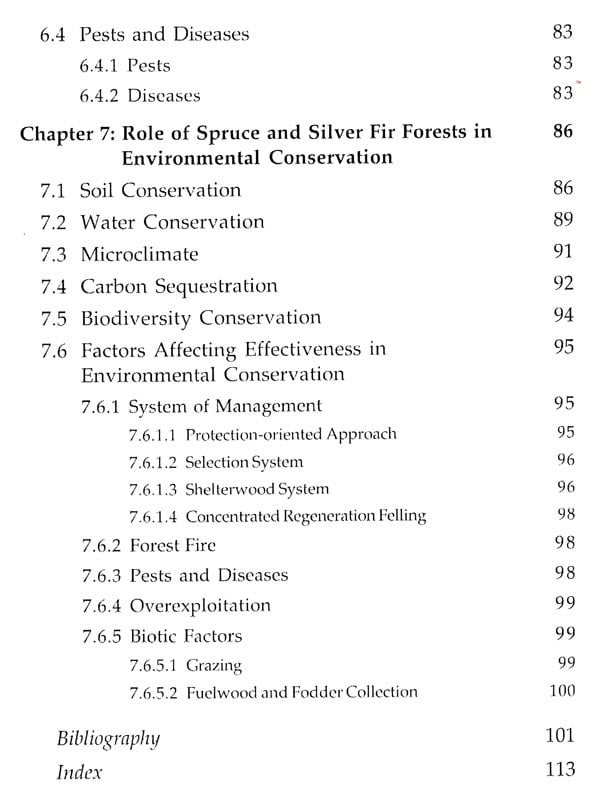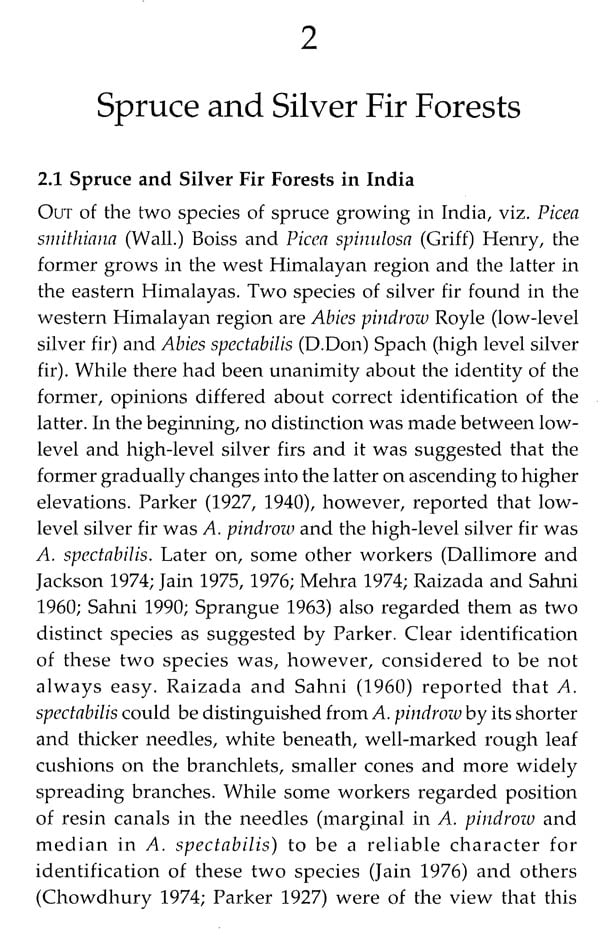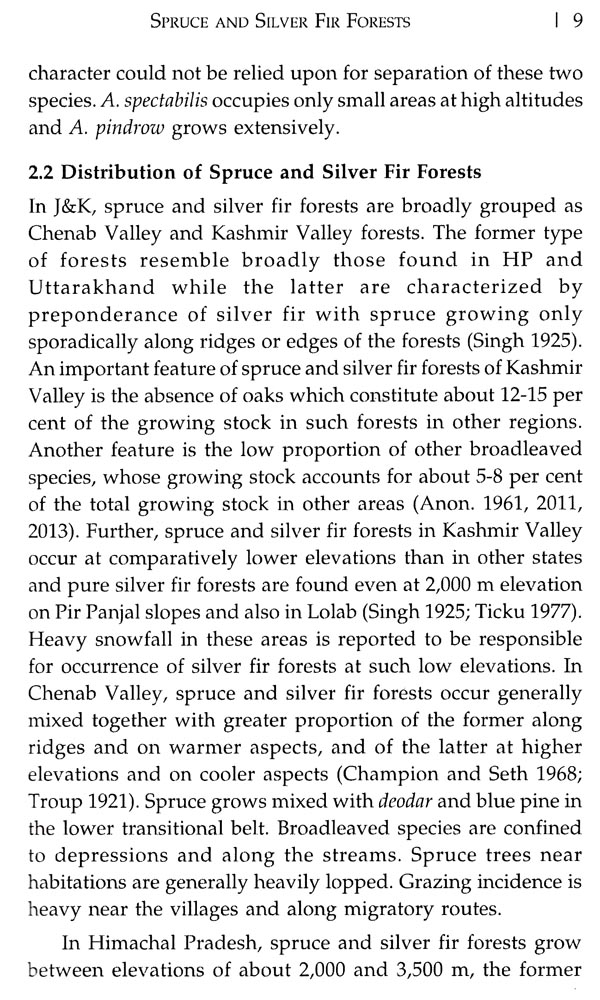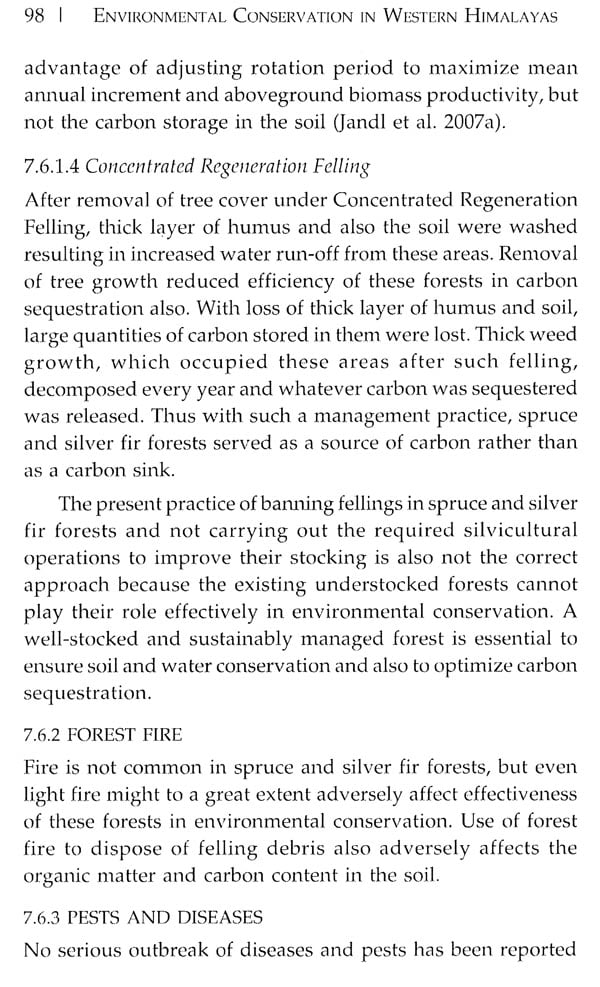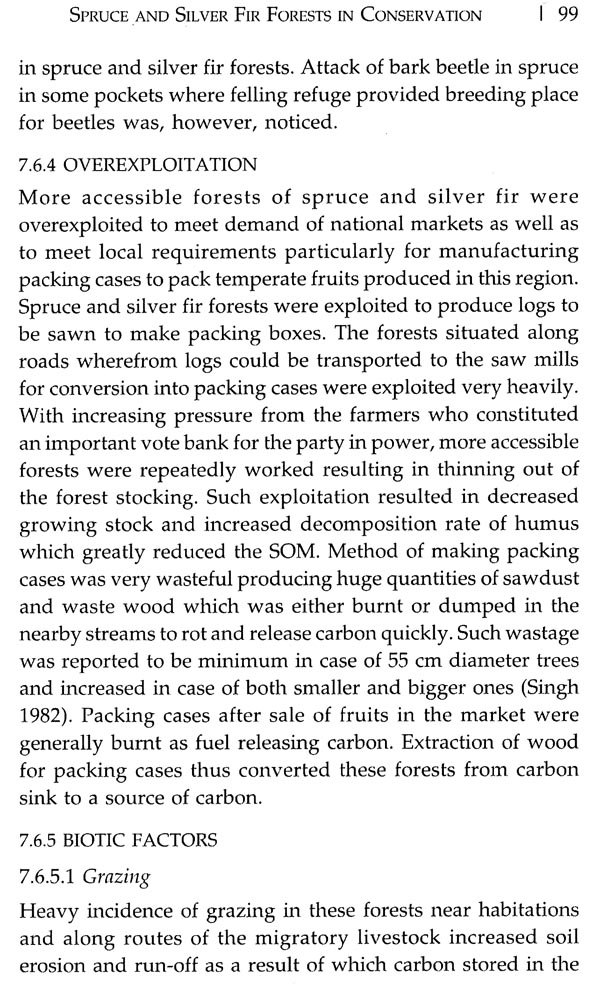
Environmental Conservation in Western Himalayas
Book Specification
| Item Code: | NAR813 |
| Author: | R.V. Singh |
| Publisher: | D. K. Printworld Pvt. Ltd. |
| Language: | English |
| Edition: | 2017 |
| ISBN: | 9788124609026 |
| Pages: | 140 |
| Cover: | HARDCOVER |
| Other Details | 9.00 X 6.00 inch |
| Weight | 320 gm |
Book Description
Spruce and silver fir forests play a quintessential role in environmental conservation in the eco-sensitive zone of western Himalayas forming catchment areas of many important rivers originating from and flowing through these mountainous areas. Working these forests under different silvicultural systems tried to develop suitable silvicultural treatment for these forests did not prove satisfactory, and appropriate silvicultural and management practices remain to be developed.
Overexploitation of these forests in several areas resulted in serious soil erosion and environmental problems. Sustainable management of spruce and silver fir forests is critical for environmental conservation in this region.
The book deals with past management of spruce and silver fir forests in western Himalayas, problems in regenerating these forests and artificial regeneration methods developed and adopted. It also vividly analyses the impacts of different management practices on the effectiveness of these forests in environmental conservation. The book should enthuse environmental conservationists, nature lovers and researchers interested in the study of the Himalayas.
R.V. Singh, MSc (Agronomy), PhD, retired as Director General, Indian Council of Forestry Research and Education. As a member of Indian Forest Service, he served in different capacities in the forest service and also as Professor of Forestry, H.P. University; Coordinator, Conifer Research Centre, Shimla; and President, Forest Research Institute, Dehra Dun. He has a long stint of forestry research both in states and in Government of India. After retirement, he has been working as a forestry consultant. He has a number of forestry-related publications to his credit including seven books and more than 100 technical papers.
SPRUCE and silver fir forests in Western Himalayas in India occurring in the states of Jammu & Kashmir, Himachal Pradesh and Uttarakhand, cover fairly extensive areas and have an important role not only in producing timber, but more importantly in environmental conservation by virtue of their location in eco-sensitive zone in catchment areas of several important rivers originating from and flowing through these mountainous areas. The forests of these species occur in these states generally between elevations of about 2,000 and 3,500 m, and cover a little more than 0.5 million ha with the share of Jammu & Kashmir, Himachal Pradesh and Uttarakhand being 64 per cent, 18.3 per cent and 17.7 per cent, respectively. In view of location of these forests in remote areas, spruce and silver fir forests were not intensively managed, but were generally conserved in the interest of soil and water conservation. With the opening of hill areas by roads, these forests were gradually brought under systematic management and different silvicultural systems based on European experience were tried suiting the crop composition and the site conditions. Subsequently, as the demand for timber of these species arose and accessibility of the mountainous areas improved further, some of the more accessible areas were worked under Selection System and later under Shelterwood System.
After some experience of managing these forests, it was realized that silvicultural requirements of spruce and silver were different, demanding management of forests of these cat( two species under different silvicultural systems which were, rive however, not found to be feasible in view of the fact that they thn grew mixed together. So it was decided to provide different We silvicultural treatments to predominantly spruce and mainly silo silver fir forests and adoption of Shelterwood System and Selection System was advocated for management of the former sui and the latter types of forests, respectively.
With the introduction of mechanized methods of logging in some accessible forests in Himachal Pradesh, modifications of Shelterwood System were tried to make such logging economical, leading to adoption of concentrated regeneration felling, amounting to almost clear felling, in some parts. The results of working spruce and silver fir forests under different silvicultural systems or their modifications discussed in the book show that none of them was found to be suitable to satisfactorily regenerate these forests and natural regeneration remained generally deficient.
After trial of different silvicultural systems, the spruce forests are presently worked under Shelterwood or Punjab Shelterwood System while majority of silver fir forests are managed under Selection System though Shelterwood System or Punjab Shelterwood System is followed in case of such forests as are comparatively more accessible and occupy moderate slopes. In those forests of both spruce and silver fir, which are vulnerable to soil erosion, no felling of trees is prescribed. Further research work is, however, necessary to develop suitable silvicultural systems for the management of spruce and silver fir forests.
